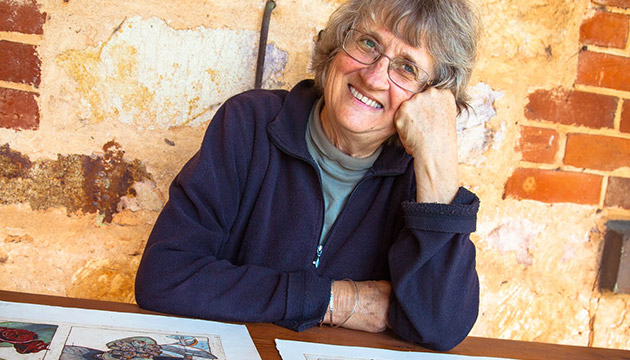West Australian artist Helen Clarke’s fine art reflects the adaptable plants that surround her in the Australian bush.
Story by Lara Jensen
It's the incredible diversity of the Australian landscape and the richness of its flora and fauna that inspire fine art printmaker, Helen Clarke. As a child growing up on a farm near the small Wheatbelt town of Cadoux in Western Australia, Helen spent countless hours exploring pockets of remnant bushland.
This rural upbringing influenced her view of the natural world and later determined the course of her artistic career.
“My parents helped to foster an interest in the natural environment; they were always pointing out different plants and their names and I think that is where my interest in native plants originally comes from,” Helen says.
After raising her family in Geraldton, Helen moved to Perth to study printmaking at TAFE in the 1980s and went on to lecture at the Western Australian School of Art Design and Media. Helen was drawn to the art of printmaking both for the repetition of the image and the variety of techniques available through the medium of reduction linocuts and etchings. “I love the process of printmaking and the lustrous textured surfaces and colours that can be created through the measured build up of layers,” Helen says.
Teaching was a natural progression for Helen who combines her love of printmaking with a desire to teach people to use printmaking as a creative medium to explore visual ideas. “I’ve always loved showing people how to do things and combining teaching with printmaking has a special duality for me,” Helen says. “I get a real buzz from seeing students learn from each other and develop their artistic skill.”
Helen worked as a studio manager for West Australian artist Leon Pericles before setting sail on a two-year yachting adventure around Australia in 1998 with her partner Ric McCracken. On their return, the two settled in the century-old former convent south of Geraldton where they live today.
Natural light streams into Helen’s studio, which is filled with vibrant prints and intricate etchings pegged to lines that hang from the ceiling with carefully pencilled scientific names such asEucalyptus todtiana (an endemic local blackbutt). Seeds and pods, carving tools, hand rollers and printing inks adorn the studio where images of plants are identified and given colour, form and texture through a time-consuming printmaking process that often involves 20 layers of colour to create a limited-edition handmade print.
This story excerpt is from Issue #89
Outback Magazine: June/July 2013










